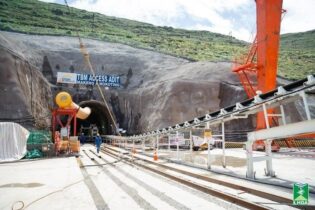Minister in the Presidency for Planning, Monitoring and Evaluation, Jeff Radebe, has released governments Medium Term Strategic Framework (MTSF) — a comprehensive plan for implementing the National Development Plan (NDP).
Cabinet approved the 2014-2019 MTSF, which will serve as the first five-year building block towards the 2030 vision in the NDP, in last month. The MTSF defines the strategic objectives and targets of government during the next five years. It is the frame of reference outlining the government’s main priorities underpinning the strategic direction of government. The MTSF therefore serves as the principal guide to the planning and the allocation of resource across all spheres of government. Informing budget submissions The MTSF priorities will inform the budget submissions that national departments make to the government’s budgeting process, as encapsulated in the Medium Term Expenditure Framework, which details a 3-year rolling expenditure and revenue plan for national and provincial departments. Ensuring government-wide implementation By law, all national and provincial departments and municipalities have to produce five-year strategic and annual performance plans and report against these plans. The MTSF is the mechanism through which all five-year strategic plans and annual plans of the three spheres of government are being aligned to the NDP and made to pull in the same direction. The aim of the MTSF is to ensure policy coherence, alignment and coordination across government plans as well as alignment with budgeting processes. The Treasury Regulations have been changed so that all departments have to submit their draft plans to the Department of Planning, Monitoring and Evaluation in the Presidency to enable a review of whether the plans incorporate all the targets from the MTSF. The MTSF will form the basis of performance agreements between the President and Ministers. Ministers will also ensure that the relevant actions and targets in the MTSF are reflected in the performance agreements of their Directors General and cascaded down to the performance agreements of other managers in the administration. Cabinet will use the MTSF as the basis for monitoring the implementation of the NDP across government over the next five years. Cabinet will consider progress reports for each of the outcomes at least three times a year and these progress reports will be made public through the Programme of Action website managed by DPME. Monitoring progressThe MTSF is intended to enable Cabinet to monitor progress on the implementation of the NDP. The MTSF is structured around 14 priority outcomes which cover the focus areas identified in the NDP, including creating jobs, developing the skills and infrastructure required by the economy, rural development, sustainable human settlements, effective and efficient local government and public service, and the environment.
Contents of the MTSF Human settlements The MTSF focuses on ensuring that poor households have adequate housing in better living environments and improving institutional capacity and coordination for better spatial targeting. Actions to achieve this priority include:- reviewing and improving existing housing instruments and subsidies to better direct housing and human settlement investments
- increasing the supply of housing opportunities using different tenure types to ensure the diversity necessary to address social, economic and cultural needs
- fast-tracking release of well-located land for housing and human settlements targeting poor and lower middle income households.
- addressing maintenance, upgrading, refurbishment and new infrastructure requirements in each municipality
- addressing water and sanitation challenges among Water Services Authorities
- improving the financial management and governance of municipalities
- tackling corruption within local government more effectively and consistently by identifying key risks and the development of appropriate responses
- creating an enabling environment for economic development to stimulate competitive, inclusive and sustainable local economies
- expanding Community Work Programme sites in 234 municipalities in order to reach 1 million participants.








